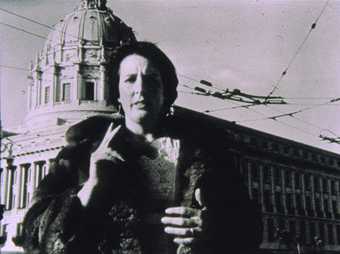Sonbert’s montage works were meticulously constructed in the selection and sequencing of individual shots. Film theorist Noel Carroll gave the term ‘polyvalent montage’ to Sonbert’s working style, in which each shot ‘can be combined with surrounding shots along potentially many dimensions.
Sonbert himself once wrote, that ‘the ambition might be seen as an attempt to hold finely balanced series of tensions in which one can read images a variety of ways, sometimes in contradictory stances so that there are many possibilities of interaction.’ These silent montage works exerted a strong formal influence on both the second generation of New York School poets as well as the Language Poets from the San Francisco Bay Area.
Each of Sonbert’s films after Carriage Trade was structured with an overarching theme in mind. Divided Loyalties, according to Sonbert, is about ‘art vs. industry and their various crossovers.’ Honor and Obey questions all forms of male-dominated authority, particularly familial, religious, political, and military. Sonbert modeled A Woman’s Touch after Hitchcock’s Marnie, both in the stylistic interplay between ‘images of [en]closure and escape,’ and in the thematic tension between male domination and female independence.
Programme
Divided Loyalties
Warren Sonbert, USA 1978, colour, 22 min
Honor And Obey
Warren Sonbert, USA 1988, colour, 21 min
A Woman’s Touch
Warren Sonbert, USA 1983, colour, 22 min

